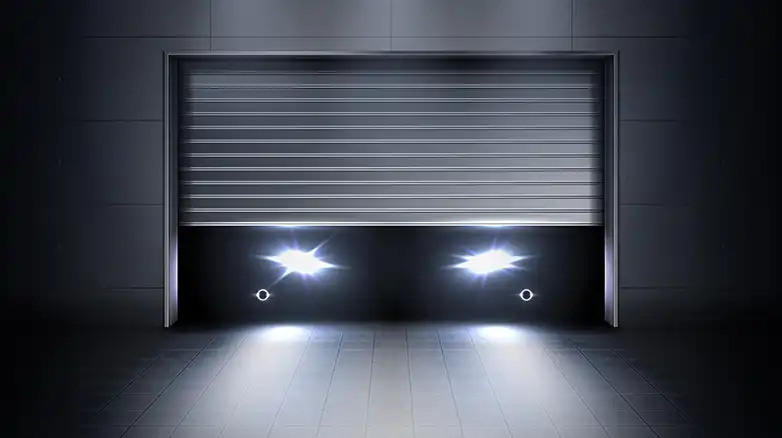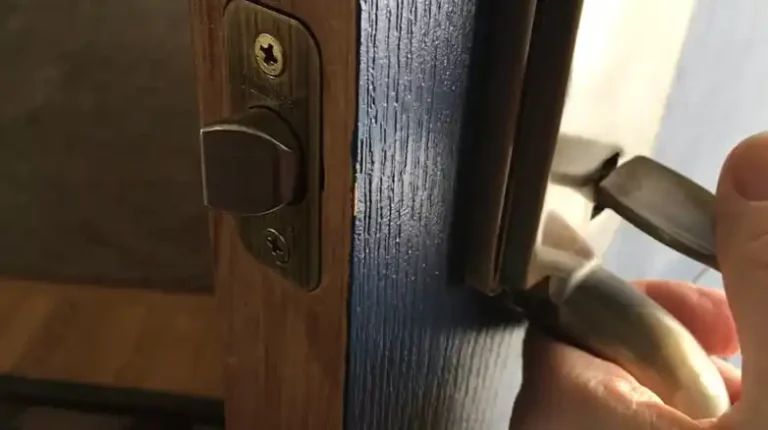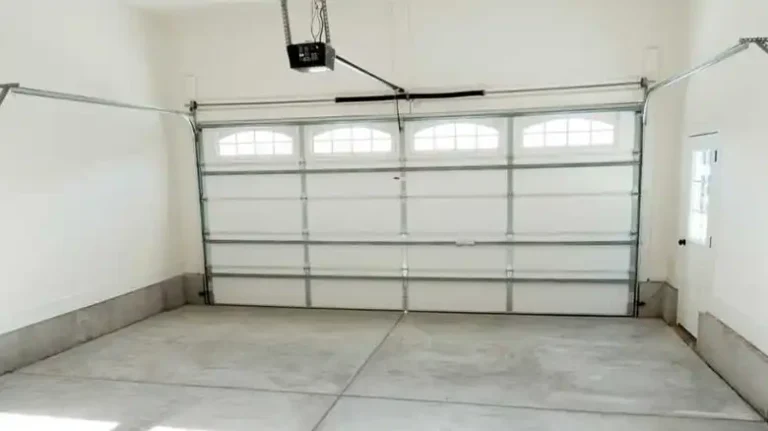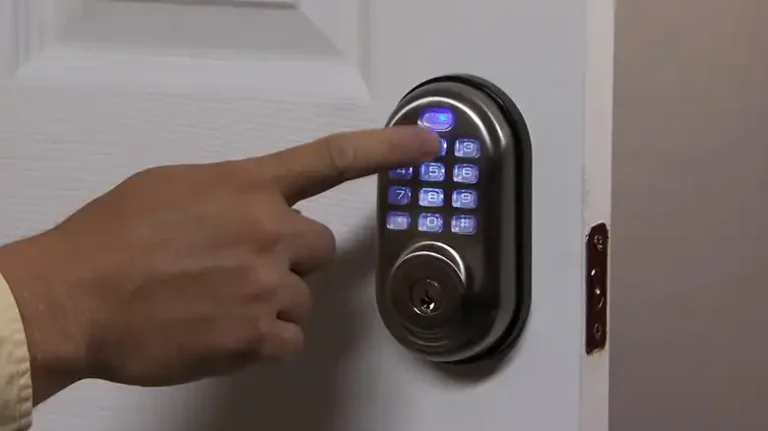Garage Door Jerks When Closing? Let’s Fix It!
Garage doors, the unsung heroes of our daily routines, often go unnoticed until they start behaving like they’ve had a bad day. You know the feeling – you hit the button to close it, and instead of smoothly gliding down, it jerks and stutters like it’s auditioning for a role in a slapstick comedy. Not exactly what you signed up for, right?
A jerking garage door when closing may be due to misaligned tracks, worn-out rollers, or an issue with the garage door opener.
Well, you don’t need to worry about this anymore, because in this article, we’re diving deep into the common issue of ‘garage door jerks when closing’. We’ll explore the reasons behind this quirky behavior, provide you with straightforward solutions, and ensure you have all the information you need to tame that unruly garage door.
So, if you’re tired of your garage door’s diva-like performances and want it to be more of a team player, stick around. We’re about to turn that jerky drama into a smooth and silent success!

Why Does Your Garage Door Act Like a Jerk?
Let’s start by addressing the elephant in the garage. Why does your garage door suddenly channel its inner drama queen when closing? Several factors could be at play –
1. Lubrication Lapse
Imagine trying to slide down a playground slide without any smooth surface – it’s not fun, is it? Similarly, garage door components need proper lubrication to function seamlessly. When lubrication is lacking, the door may jerk.
2. Misaligned Tracks
Sometimes, the tracks guiding your garage door can get out of alignment. This misalignment can lead to uneven movement, causing your door to jerk when closing.
3. Torsion Spring Troubles
Torsion springs are responsible for counterbalancing the weight of the garage door. If they’re worn out or broken, your door can exhibit jerky behavior.
4. Remote Control Interference
Believe it or not, sometimes, your garage door remote control can cause erratic behavior. Interference from other devices or a low battery can make your door misbehave.
5. Garage Door Opener Issues
The opener unit itself may be the culprit. Faulty wiring or worn-out gears can lead to jerky door movement.
Smooth Operator: How to Fix a Jerky Garage Door
Now that you know why your garage door is behaving like a diva, it’s time to transform it into a smooth operator. Here’s a step-by-step guide to help you get started –
Step 1: Gather Your Tools
Before you start any DIY project, it’s essential to have the right tools at your disposal. For this garage door fix, you’ll need –
- Silicone-based lubricant: Choose a high-quality lubricant designed for garage doors. It should be silicone-based as it works well in various temperatures and doesn’t attract dust.
- Level: A level is crucial for ensuring that the tracks are properly aligned. It will help you spot any irregularities and make necessary adjustments.
- Wrench: You may need a wrench to tighten any loose bolts or nuts on the door or its components.
- Ladder: Safety first! A sturdy ladder will allow you to reach and inspect different parts of your garage door system. Make sure it’s in good condition before use.
Step 2: Lubricate the Components
Proper lubrication is key to smooth garage door operation. Here’s how to do it –
1. Clean the surfaces: Before applying lubricant, use a cloth to clean the hinges, rollers, and tracks. Removing dirt and debris ensures a smoother application.
2. Apply the lubricant: Use the silicone-based lubricant to coat the following components –
- Hinges: Apply a few drops of lubricant on each hinge where they pivot.
- Rollers: Lubricate the rollers by applying a small amount to the roller stem. Avoid over-lubrication, as it can lead to a buildup of debris.
- Tracks: Apply a thin layer of lubricant to the inside of the tracks. Make sure to wipe away any excess to prevent attracting dirt.
Step 3: Check the Tracks
Misaligned tracks can cause jerky door movement. Follow these steps to inspect and adjust the tracks –
1. Visual inspection: Examine the tracks closely to identify any misalignment. Look for gaps or irregularities in their alignment.
2. Use a level: Place the level on the tracks to determine if they are level and parallel. If not, use a wrench to loosen the bolts holding the tracks in place.
3. Adjust the tracks: Gently tap the tracks with a rubber mallet to align them properly. Recheck the level and tighten the bolts once they are aligned.
Step 4: Test the Springs
Torsion springs play a crucial role in the garage door’s balance. Here’s how to check them –
1. Manually lift the door: Disconnect the garage door opener, then manually lift the door. It should move smoothly and stay in place when partially open.
2. Check for balance: If the door feels heavy or doesn’t remain partially open, the torsion springs may be worn out or improperly adjusted.
Step 5: Review the Remote Control
Sometimes, the issue might be with the remote control. Here’s what to do –
1. Replace the battery: Open the remote control and replace the battery with a fresh one. Weak batteries can cause intermittent issues.
2. Test for interference: Ensure there are no electronic devices nearby that might interfere with the signal from the remote control. Move any potential sources of interference away from the garage.
Step 6: Opener Inspection
If none of the previous steps resolves the issue, it’s time to inspect the garage door opener:
1. Consult the manual: Refer to the garage door opener’s manual for troubleshooting tips. Manufacturers often provide guidance on common issues and how to resolve them.
2. Call a professional: If the problem persists, or if you’re uncomfortable with opener-related repairs, it’s best to call a professional technician. They can diagnose and fix more complex issues with the opener unit.
By following these detailed steps, you’ll increase the chances of transforming your jerky garage door into a smooth operator. Remember to prioritize safety throughout the process, and don’t hesitate to seek professional help if needed. A well-maintained garage door not only functions smoothly but also enhances the security and convenience of your home.
Common Related Questions
How can I check if my garage door tracks are misaligned?
Use a level to inspect the tracks. If they’re not level and parallel, they may be misaligned and need adjustment.
Are torsion springs easy to replace on my own?
Torsion spring replacement is a complex and potentially dangerous task. It’s best to hire a professional technician to handle it.
What should I do if changing the remote control battery doesn’t solve the problem?
If replacing the battery doesn’t work, ensure there’s no interference from other electronic devices. If the issue persists, consult your garage door opener’s manual or call a technician for further assistance.
How often should I perform maintenance on my garage door to prevent jerking issues?
Regular maintenance, including lubrication and visual inspections, should be performed every six months to a year to keep your garage door operating smoothly.
Conclusion
In the world of garage doors, jerks are not welcome! When your garage door starts behaving erratically, it’s essential to address the issue promptly. By understanding the potential causes and following our step-by-step guide, you can bid farewell to those jerky door antics. Remember, a well-maintained and smoothly functioning garage door not only adds convenience to your life but also enhances the security of your home. So, go ahead and show that garage door who’s boss!
If you have any additional questions or need further assistance with your garage door troubles, feel free to leave a comment below. We’re here to help. Thanks for reading, and may your garage door glide as gracefully as a swan from now on! Good luck!
![[Explored] Can You Change a Lock without Changing the Door Knob?](https://doorsuggest.com/wp-content/uploads/2023/09/Can-You-Change-a-Lock-without-Changing-the-Door-Knob-768x431.webp)


![[Explained] Do All Door Knobs Have The Same Key?](https://doorsuggest.com/wp-content/uploads/2023/09/Do-All-Door-Knobs-Have-The-Same-Key-768x431.webp)

